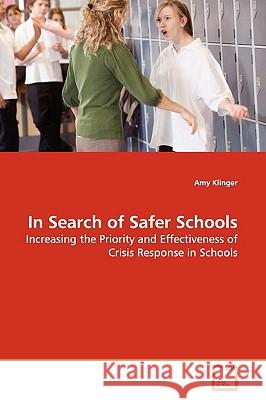In Search of Safer Schools » książka
In Search of Safer Schools
ISBN-13: 9783639143751 / Angielski / Miękka / 2009 / 140 str.
Research indicates that virtually every school will experience a crisis event of some sort in the near future. The real question is whether a school will be adequately prepared for this certainty. Schools have long operated on the naive assumption of safety despite the inevitability of crisis events. As a result, schools are not adequately prepared for the medical, emotional, legal, and financial implications of a failed crisis response. This book examines the factors and priorities that impact the level of preparedness in a school district and makes practical recommendations for improved crisis planning. Beginning with a history of school violence, the work explores the results of the author's study of the safety and crisis planning practices of school districts. The highly effective method of comprehensive crisis planning is discussed in depth, providing administrators, board members, teachers, and researchers with a working knowledge and practical understanding of this vital topic. While financial issues and student achievement have often consumed practitioners' time and attention, it is the safety of students that should be any school's top priority.
Research indicates that virtually every school willexperience a crisis event of some sort in the nearfuture. The real question is whether a school will beadequately prepared for this certainty. Schools havelong operated on the naive assumption of safetydespite the inevitability of crisis events. As aresult, schools are not adequately prepared for themedical, emotional, legal, and financial implicationsof a failed crisis response. This book examines thefactors and priorities that impact the level ofpreparedness in a school district and makes practicalrecommendations for improved crisis planning.Beginning with a history of school violence, the workexplores the results of the authors study ofthe safety and crisis planning practices of schooldistricts. The highly effective method ofcomprehensive crisis planning is discussed in depth,providing administrators, board members,teachers, and researchers with a workingknowledge and practical understanding of this vitaltopic. While financial issues and student achievementhave often consumed practitioners time andattention, it is the safety of students that shouldbe any schools top priority.











